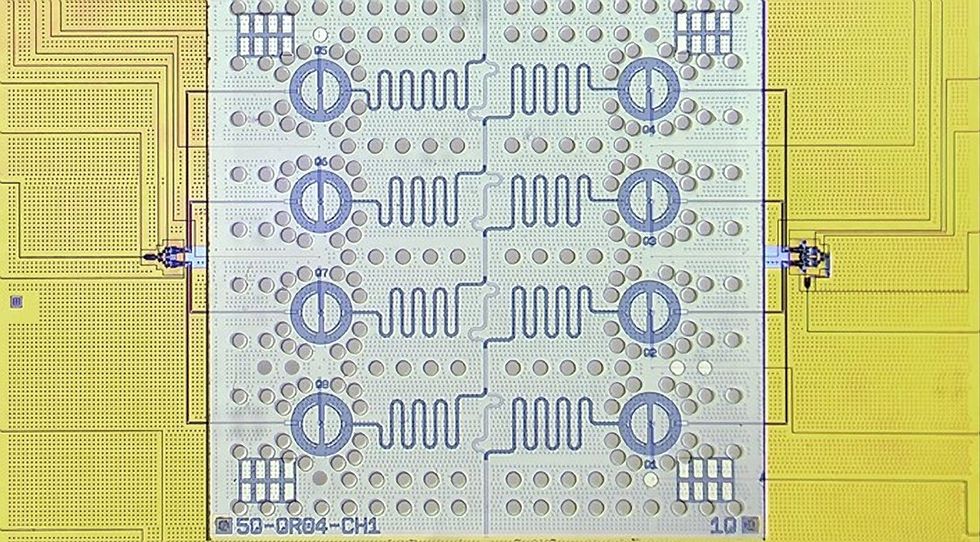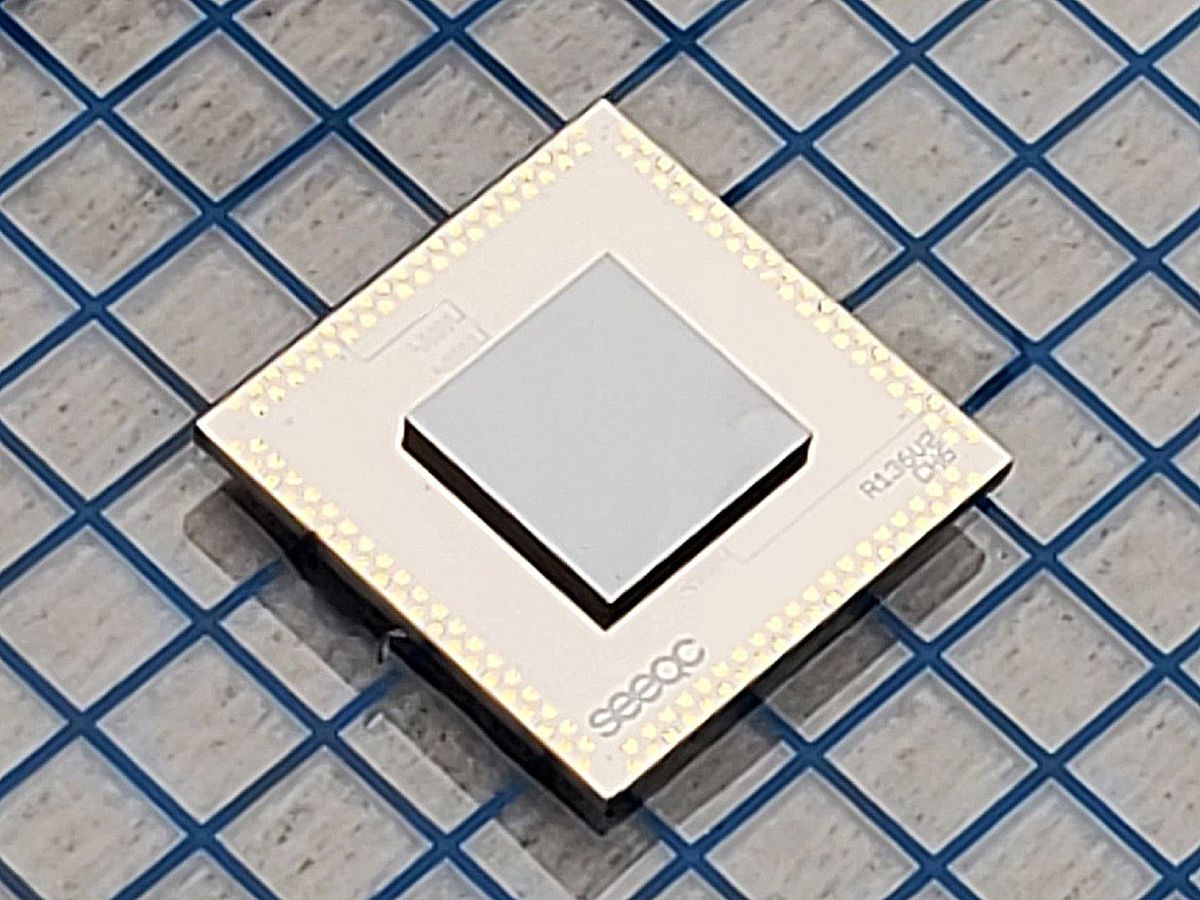Quantum computers can, in theory, find answers to problems that classical computers would take eons to solve, but researchers currently face great challenges scaling them up for practical use. Recently, a quantum-computing startup unveiled the first digital superconducting microchip to control quantum processors, which the company suggests might help qubits reach their ultrafast and high-efficiency potential.
The more qubits that are quantum mechanically linked together via entanglement, the more computations that can be performed in an exponential fashion. Google, IBM, and other tech giants are developing quantum computers using superconducting circuits as qubits because such hardware appears to be scalable to thousands of qubits in the near future.
“It is believed that 100,000 to 1 million physical qubits are required to build a practical quantum computer. We are paving a way of realizing it.”
—Shu-Jen Han, Seeqc
“Currently, IBM and Google are using a direct control scheme for each superconducting qubit,” says Shu-Jen Han, vice president of engineering at quantum-computing startup Seeqc, in Elmsford, N.Y. This means each qubit requires its own analog control lines, which directly connect electronics at room temperatures to the qubit at millikelvin temperatures, just a few thousandths of a degree above absolute zero (–273.15 °C), he explains.
Han notes that this approach faces a number of disadvantages. First, it scales poorly, as the number of control lines needed rises linearly with the number of qubits. Second, the large number of components required also generates heat that can disrupt the qubits. Third, it uses analog control signals that are quite sensitive to noise. Finally, this strategy often results in significant delays as signals shuttle back and forth between quantum processors that work at cryogenic temperatures and control electronics that usually operate at room temperatures. Such delays can be significant problems for key quantum-computing operations that require speed, such as error correction, Han says.
To overcome these problems, Seeqc has developed a new microchip for controlling quantum processors. The device is based on a superconducting electronics approach called single-flux quantum-logic technology, which encodes data in the form of single magnetic fluctuations.
The new device operates at speeds up to 40 gigahertz at 20 millikelvin. It is compatible with all superconducting qubit types, as well as other qubit platforms such as spin qubits, the company says.
The new control microchip operates at roughly the same cryogenic temperatures as superconducting qubits, which lets Seeqc bond it directly with a quantum processor. This dramatically reduces delays from signals traveling back and forth between the control electronics and the qubits.

Eliminating the need for racks of expensive room-temperature control electronics also reduces the cost and complexity of quantum computing by orders of magnitude, the company says. Reducing the number of cables and other components needed to control the qubits also means “there will be much lower heat generated in the system to degrade qubit performance,” Han adds.
In addition, the new chip uses digital control signals. These are far more resistant to interference and noise than analog signals, Han notes.
Moreover, the new chip includes a demultiplexer, which can distribute a single control signal to multiple qubits. This significantly reduces the number of control lines, helping resolve the scaling problem, Han says.
One way that IBM and Google are trying to improve their control of their quantum processors is with cryo-CMOS control microchips, which, like Seeqc’s device, operate at cryogenic temperatures. However, CMOS transistors generate much more heat than superconducting electronics. This means IBM and Google cannot integrate these cryo-CMOS microchips directly with the quantum processors, as Seeqc can. These cryo-CMOS devices also must possess limited circuit complexity to avoid generating too much heat, Han says.
In contrast, Seeqc’s devices are 40 times as fast and 1,000 times as energy efficient as cryo-CMOS technology, Han says. In addition, the cryo-CMOS microchips still rely on analog control signals, and are not capable of on-chip demultiplexing like Seeqc’s chip, he adds.
A quantum processor from Seeqc that employs this new control microchip was unveiled as Italy’s first full-stack quantum computer in April. The company hopes this new control strategy may help bring quantum computing closer to reality, Han says. “It is believed that 100,000 to 1 million physical qubits are required to build a practical quantum computer,” Han says. “We are paving a way of realizing it by solving scaling issues.”
- Two Oddball Ideas for a Megaqubit Quantum Computer ›
- Intel Unveils Cryogenic Chip to Speed Quantum Computing ›
Charles Q. Choi is a science reporter who contributes regularly to IEEE Spectrum. He has written for Scientific American, The New York Times, Wired, and Science, among others.


